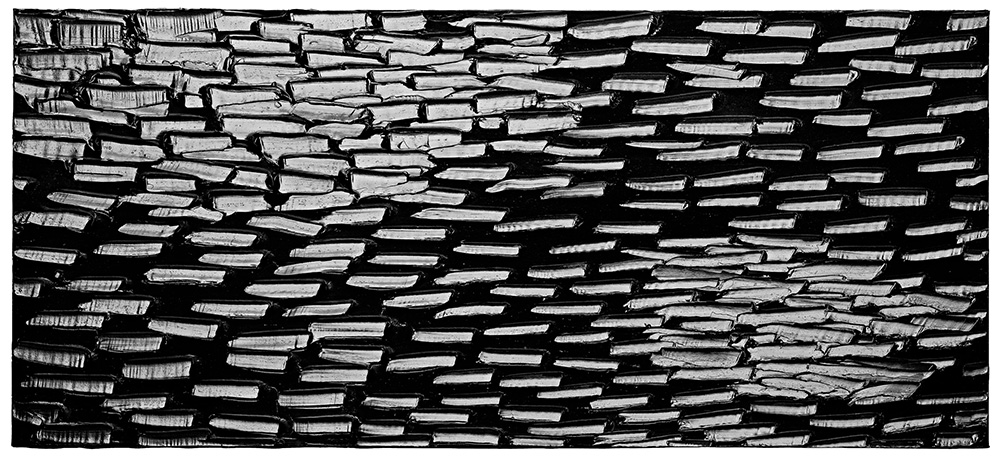ART CITIES:Cologne-Pierre Soulages
 Pierre Soulages, is recognized as one of the major figures of abstract art and the greatest painter of the current French scene. In 1979, Pierre Soulages, who had already been painting for over thirty years, embarked on a new phase of his work which he termed “Ultrablack”. By concentrating on one color, black, and its relationship with light, he constructed a pictorial space that stands opposed to the monochrome in the development of Contemporary art.
Pierre Soulages, is recognized as one of the major figures of abstract art and the greatest painter of the current French scene. In 1979, Pierre Soulages, who had already been painting for over thirty years, embarked on a new phase of his work which he termed “Ultrablack”. By concentrating on one color, black, and its relationship with light, he constructed a pictorial space that stands opposed to the monochrome in the development of Contemporary art.
By Efi Michalarou
Photo: Karsten Greve Gallery Archive
Pierre Soulages’ solo exhibition “Peinture” at Karsten Greve Gallery in Cologne presents presents major “Ultrablack” works from 1997 to 2016 that the Gallery has acquired directly from the artist. From the beginning, the titles of his works have been made up of the word “peinture” together with the dimensions and the exact dating of the respective work. With special tools, brushes, rollers and spatulas which he makes himself, he applies different layers of paint. From the resulting mass, Pierre Soulages creates smooth surfaces and deep furrows, as well as matt and glossy areas. The relief-like surface begins to shine and shimmer as a result of the refraction of light. During his childhood Soulages was fascinated by the Celtic carvings in a local museum, prehistoric cave art, and the Romanesque architecture and sculpture of Sainte-Foy church at Conques. In 1938 he went to Paris to study art. He enrolled at the École des Beaux-Arts, but he soon left Paris, frustrated by the school’s traditional approach. Back in Rodez he continued to paint, especially trees in winter, with their bare black branches against the sky. In 1941 he fought briefly in World War II, though he was demobilized soon after being called up. He then attended the École des Beaux-Arts in Montpellier but spent most of the war clandestinely working on a vineyard to avoid being sent to a forced labor camp during the German occupation. In 1946 he moved to Courbevoie, outside Paris. There he set up a studio and began producing abstract works, characterized by their heavy black brush strokes. He befriended other artists, including Hans Hartung, Francis Picabia, and Fernand Léger and had his first exhibition at the Salon des Surindépendants in 1946. His first solo exhibition was two years later at the Galerie Lydia Conti in Paris. Participation in the seminal group exhibition “French Abstract Painting” conceived by Otto Domnick in 1948, which was shown in seven German cities, was Soulages’ first exhibition abroad. It redefined modern art after the Second World War and was very well received. His painting style shifted subtly over his long career, becoming looser and more gestural in the 1950s and focusing almost entirely on the texture and brushwork of black oil paint on large canvases in his works after 1979, works with a colour he called “Outrenoir”, literally “beyond black”. The international recognition accorded to his abstract-gestural canvases from this creative period is also reflected in his three appearances at documenta: I (1955), II (1959) and III (1964). From 1987 to 1994 Soulages designed over 100 contemporary stained-glass windows for his much-loved Sainte-Foy church. He avoided polychromatic glass and elaborate narratives or decorations, using white translucent glass that he designed and simple lead fittings to maintain the purity of the natural light. The windows were installed at Sainte-Foy in 1994 and remained on permanent display.
Info: Karsten Greve Gallery, Drususgasse 1-5, Cologne, Duration: 13/4-23/6/18, Days & Hours: Tue-Fri 10:00-18:30, Sat 10:00-18:00, http://galerie-karsten-greve.com

